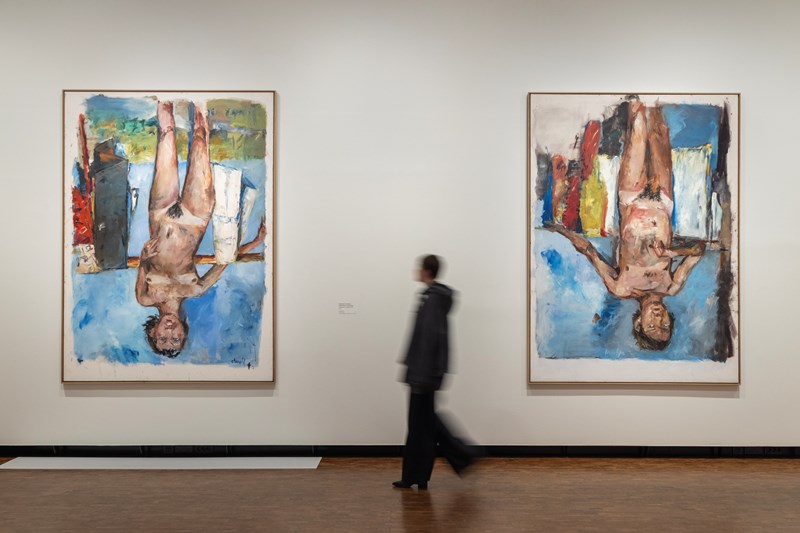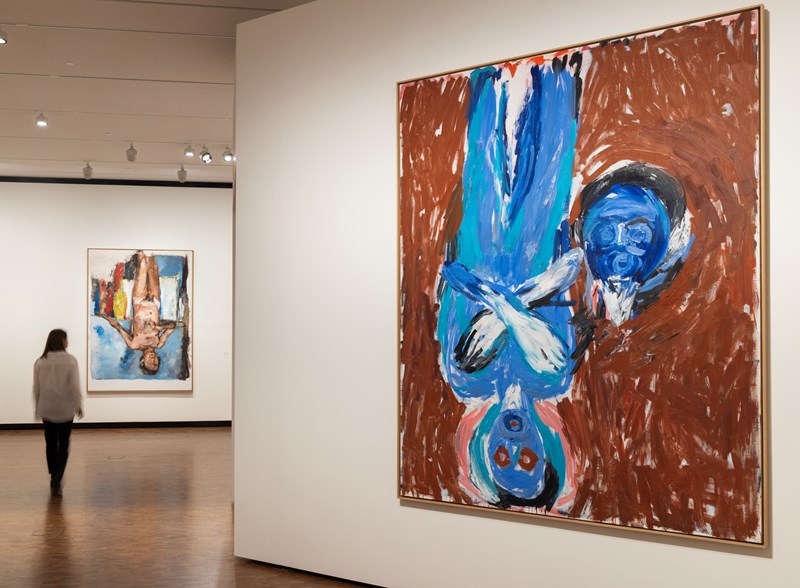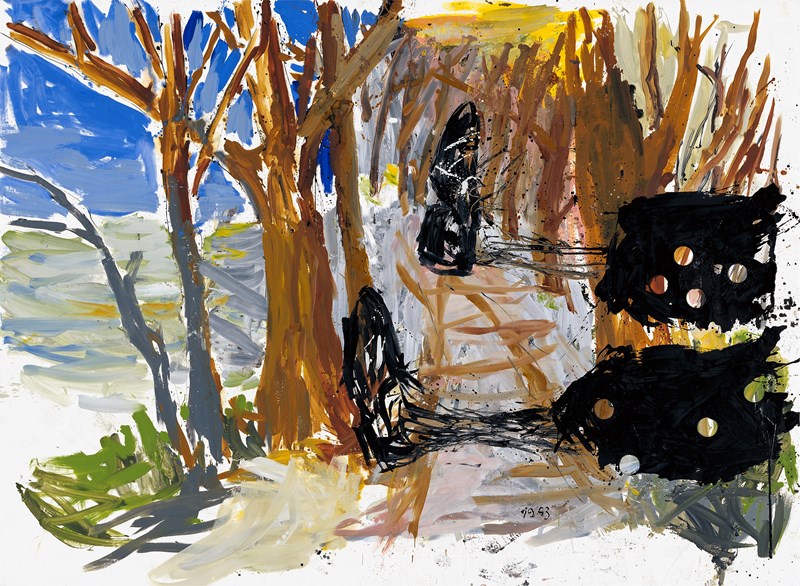Five funfacts about Georg Baselitz
Want to dip your toes into Feet First? Here are five fun facts you need to know.

Photo: Ove Kvavik, Munchmuseet
1. Upside down world
When you enter the exhibition Feet First, you may be surprised to see that many of the artworks appear to be hanging upside down. This is not a mistake. Upside down pictures are, in fact, the most well known feature of Georg Baselitz’s artistry. The first time he tried this was in 1969. For Baselitz, painting upside down was a way to open up an alternative path in modern art, between total abstraction and recognisable figures and objects.
Here is how he has explained his reasons for painting upside down: ‘It has to do with my belief that painting is not a mirror of reality. That is a myth. It’s about reinventing reality, and one of the best ways to destroy this myth is by painting the image upside down.’

Photo: Ove Kvavik, Munchmuseet
2. In Edvard Munch’s footsteps
An important red thread through the whole exhibition is Georg Baselitz’s relationship to Edvard Munch. Since the start of his career, Baselitz has conducted an ongoing dialogue with Munch, whose head and body also crop up in many of Baselitz’s paintings and drawings. Baselitz is especially interested in Munch’s self-portraits, such as The Night Wanderer and Self-Portrait by the Window, and you can see echoes of these images, as well as the figure from The Scream, in some of the Baselitz works in this exhibition. Like Munch, Baselitz is an artist who, later in life, has depicted his own ageing process in his paintings. He has also expressed an interest in the way Munch painted claustrophobic spaces, emphasising radiating multiple outlines and intense shadows.

Apperance at Sandteich (Remix), Georg Baselitz, 2006, Oil on canvas. Private collection. Photo: Jochen Littkemann, Berlin
3. Life, remixed
In the mid-2000s, Georg Baselitz started looking through old catalogues and sketchbooks of his own works. For an exhibition in 2006 he decided to paint new versions of some of these earlier images, which he called ‘Remixes’. These newer works had a fluid, transparent quality in the paintwork. Part of his inspiration came from Edvard Munch, who also repeatedly painted his own motifs in new ways.
In his whole career, Baselitz has always taken a strong interest in the work of other artists, both from history and his own contemporaries. In many of his works you can see clear reflections or reimaginings of other artworks. In the Feet First exhibition these include the German expressionist Emil Nolde, American artists such as Willem de Kooning and Roy Lichtenstein, the Saxony landscape artist Ferdinand von Rayski, and paintings in the Soviet social realist genre.

Georg Baselitz, aged 24, at his exhibition in West Berlin, 1963. Photo: Heinz Wunnicke.
4. An Artist from Germany
Georg Baselitz was born Hans-Georg Kern. Later he took his name from the place where he grew up: the village of Deutschbaselitz, which was in East Germany after the Second World War. His controversial, provocative art and life have been intimately connected with Germany’s turbulent post-war history, which you can learn more about in our exhibition. From the Iron Curtain to Reunification, protests and peace, and revelations from the secret East German archives which had a direct effect on the direction of Baselitz’s art.
5. A Bad Trip in Oslo
Baselitz made the wood sculpture Greetings From Oslo (1986) after his visit to Oslo in 1986, when he had a large exhibition at Henie Onstad Art Centre. While he was here, he also visited the old Munch Museum at Tøyen. Unfortunately he tripped outside the museum and badly injured his knee. The sculpture, whose face also resembles the artist himself, was inspired by a waitress working in the museum restaurant. She tried to serve him a drink to calm his nerves, but appeared to be drunk herself, and made a mess. Baselitz described the whole awkward experience as like being ‘forced to his knees’ by the spirit of Edvard Munch.



